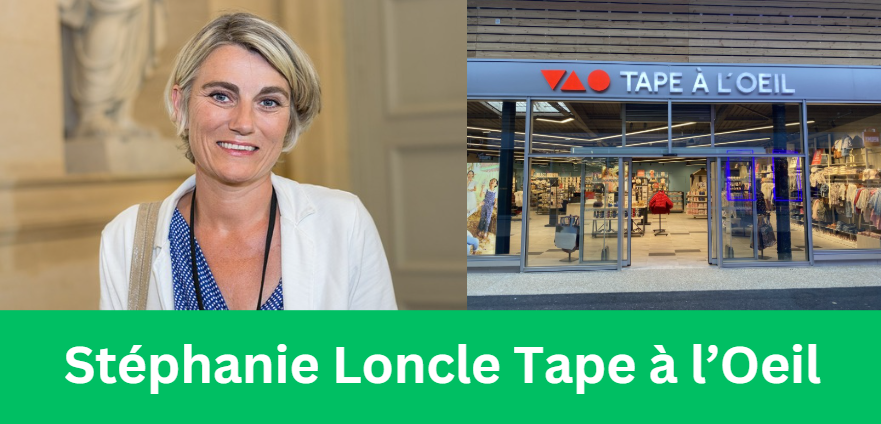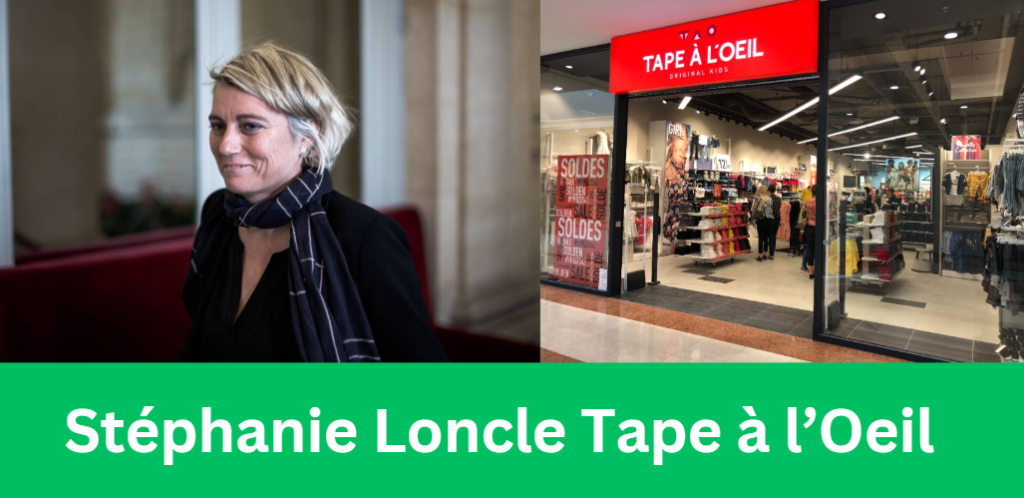
The world of fashion and branding often sees unlikely connections between the arts and commercial success. One such intriguing link is the relationship between Stéphanie Loncle Tape à l’Oeil, a renowned French academic, and the celebrated children’s clothing brand Tape à l’Oeil.
While Stéphanie Loncle is widely known for her academic contributions, especially in the field of theater studies, her connection with Tape à l’Oeil has raised questions about the intersection of academia, creativity, and fashion.
In this article, we explore the potential influence Stéphanie Loncle Tape à l’Oeil might have, examining how her academic expertise could shape the brand’s values, strategies, and creative direction.
Who is Stéphanie Loncle?

Stéphanie Loncle Tape à l’Oeil may not be a name immediately associated with the fashion world, but her background in academia and cultural studies holds significant implications for the world of branding.
As a lecturer in Performing Arts at the University of Caen Normandy, Stéphanie Loncle has made a notable impact on the field of theater, focusing particularly on the intersections of liberalism, theater, and cultural practices.
Through her research, she has contributed to a deeper understanding of the social and economic dimensions of theater in 19th-century France.
Though Stéphanie Loncle is primarily recognized for her scholarly work, her insights into culture and storytelling could be invaluable in the context of fashion branding, particularly for brands like Tape à l’Oeil.
Her expertise in how art influences societal structures aligns well with the evolving role of narrative in branding. As branding increasingly relies on creative storytelling, Stéphanie Loncle Tape à l’Oeil represents a potential bridge between academic theory and commercial creativity.
What is Tape à l’Oeil?

Tape à l’Oeil, the iconic French brand known for its stylish and comfortable children’s clothing, has become synonymous with high-quality fashion that doesn’t compromise on fun or comfort.
Since its creation, Tape à l’Oeil has prided itself on offering affordable, trendy, and durable clothing for young children. The brand’s commitment to providing the best in both design and fabric ensures its continued popularity not only in France but around the globe.
At its core, Tape à l’Oeil aims to create an experience for both parents and children. The designs reflect a deep understanding of what appeals to young audiences, combining practical fashion with imaginative elements.
This approach positions Tape à l’Oeil as more than just a clothing brand—it’s a lifestyle choice, one that resonates with those who value creativity and quality in their everyday life.
The Connection Between Stéphanie Loncle and Tape à l’Oeil

At first glance, the connection between Stéphanie Loncle Tape à l’Oeil might not be immediately apparent. While Stéphanie Loncle is better known for her academic and intellectual pursuits rather than her involvement in the fashion world, there are ways in which her expertise could influence the brand.
Tape à l’Oeil, like many modern brands, thrives on creative storytelling, marketing, and cultural engagement. This is where Stéphanie Loncle’s work in cultural theory and theater could play a role, especially in how the brand communicates its message to its audience.
Theories explored by Stéphanie Loncle about the liberalization of the arts and the commercialization of culture could potentially inform Tape à l’Oeil’s brand strategy. Brands today are not merely selling products; they are telling stories, engaging with customers through emotional and cultural narratives.
The ability to weave such narratives into branding is something Stéphanie Loncle has studied extensively in the realm of theater and liberalism, and her insights could theoretically influence how Tape à l’Oeil crafts its marketing strategies.
While there is no confirmed, direct collaboration between Stéphanie Loncle and Tape à l’Oeil, her research on the arts, creativity, and cultural practices could provide valuable insights into how Tape à l’Oeil positions itself within the competitive fashion industry.
How Arts and Culture Shape Branding: The Role of Stéphanie Loncle’s Research

In today’s market, branding is about more than just selling a product—it’s about crafting an identity, telling a story, and engaging with customers on a cultural level.
The role of art and culture in modern branding has grown significantly, with many companies focusing on how to incorporate storytelling and cultural narratives into their messaging. As brands like Tape à l’Oeil continue to evolve, integrating cultural insight into their strategies becomes more crucial.
Stéphanie Loncle Tape à l’Oeil is an excellent example of how academic research can inform creative industries. For Tape à l’Oeil, embracing cultural insights might involve infusing their collections with deeper narratives, aligning their clothes with artistic expressions that appeal to both children and parents.
As Tape à l’Oeil continues to grow in popularity, understanding cultural shifts and creative trends, similar to those Stéphanie Loncle studies, can strengthen their market position.
The Influence of Stéphanie Loncle on Branding Strategies

While it is not confirmed that Stéphanie Loncle has directly impacted Tape à l’Oeil’s branding efforts, the possible influence of her work on the brand’s overall ethos is worth exploring. Brands today are increasingly aware of the importance of culture in consumer engagement.
From sustainability to inclusivity, Tape à l’Oeil could align itself more with cultural movements, incorporating elements from Stéphanie Loncle’s academic perspective to deepen its narrative.
By embracing storytelling techniques often seen in theater, the brand can elevate its connection with consumers, weaving emotional and cultural ties into its products.
Moreover, Stéphanie Loncle Tape à l’Oeil represents an ideal intersection of academia and industry, where creative theory and branding practices overlap. The potential for collaboration, even if theoretical, underscores the importance of cultural literacy in today’s fast-paced branding world.
Tape à l’Oeil’s Strategies and Future Outlook

Tape à l’Oeil has already made significant strides in terms of embracing sustainability, focusing on eco-friendly materials and ethical manufacturing processes. This aligns with broader consumer demand for responsibility in fashion.
If Stéphanie Loncle Tape à l’Oeil were to collaborate or influence the brand in any way, it could lead to further innovative marketing campaigns that focus not only on the products but on the stories behind them.
Stéphanie Loncle’s focus on cultural and societal themes might help Tape à l’Oeil further solidify its position as a brand that values both aesthetics and ethical considerations.
By integrating deeper cultural narratives and creative thinking into its strategy, Tape à l’Oeil could not only increase its appeal but also set itself apart as a brand that understands and reflects the evolving societal landscape.
Conclusion: The Unseen Impact of Stéphanie Loncle on Tape à l’Oeil
The potential connection between Stéphanie Loncle Tape à l’Oeil highlights an interesting intersection between academic theory and commercial branding.
While no formal partnership has been established, the influence of Stéphanie Loncle’s research in cultural practices, theater, and liberalism could indirectly impact how Tape à l’Oeil approaches its brand identity and storytelling.
As brands increasingly rely on cultural narratives and creative expressions, the contributions of intellectuals like Stéphanie Loncle provide valuable insights into how to navigate and leverage these shifts in branding.
By exploring the possible link between Stéphanie Loncle and Tape à l’Oeil, we gain a better understanding of how academia can influence the world of branding and how cultural narratives shape consumer relationships in today’s market.
FAQs About Stéphanie Loncle Tape à l’Oeil
What is the role of cultural theory in branding?
Cultural theory helps brands understand societal trends and values, allowing them to create emotional connections with their audience through relevant and resonant messaging.
How can brands use storytelling to enhance their identity?
Storytelling enables brands to craft unique narratives that reflect their values, helping them stand out and build stronger relationships with consumers.
Why is sustainability important in children’s fashion?
Sustainability in children’s fashion is crucial due to rising consumer demand for eco-friendly materials and ethical production practices, reflecting growing environmental concerns.
How does theater and arts influence consumer perceptions?
Incorporating arts and theater into branding evokes emotions and creativity, helping brands forge deeper connections with their audience.
Why are cultural narratives important for fashion brands?
Cultural narratives align products with societal values, making brands more relatable and fostering stronger loyalty from customers.
Affiliated Posts Like Stéphanie Loncle Tape à l’Oeil
Alexander Calder Tubes EA for Sale Alexander Calder Tubes
Sunset Today Time 35981: A Detailed Guide to Fort Payne’s Sunset Times





